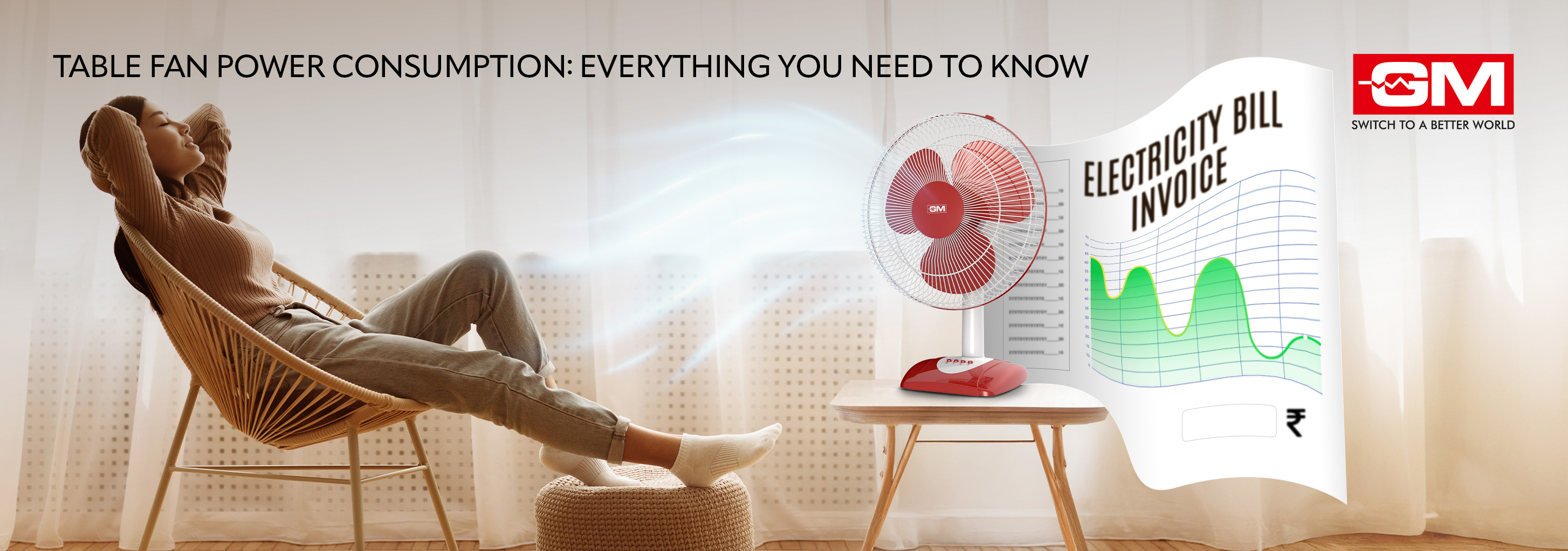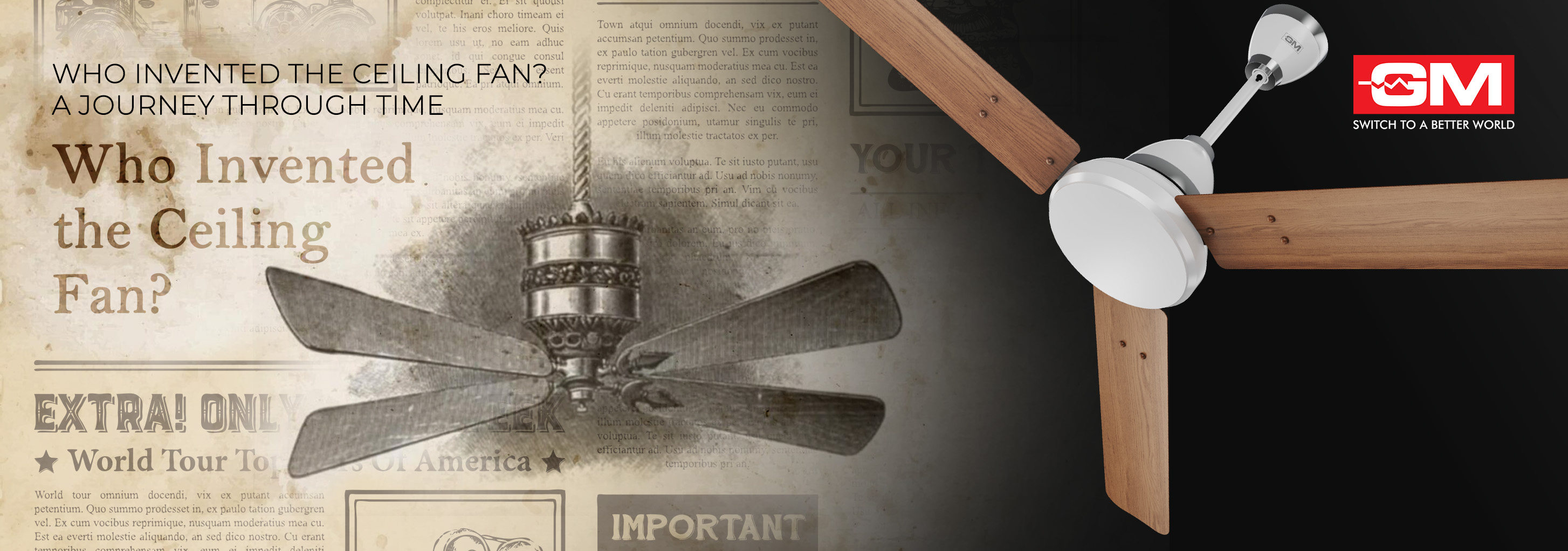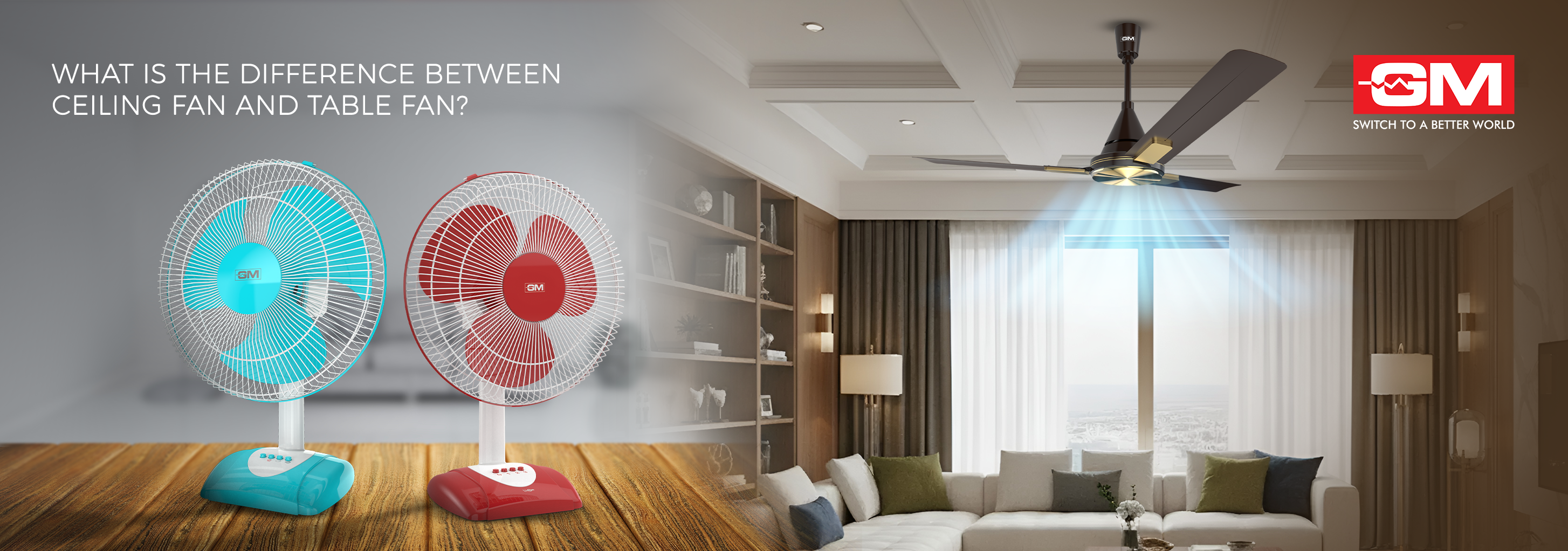Blog
Table Fan Power Consumption: Everything You Need to Know
Updated on Jul 2025

A table fan is a reliable cooling solution commonly found in Indian homes. With summers often hitting extreme high temperatures, a table fan is a great alternative to air conditioners, owing to its portability and convenience. But the rising energy costs have compelled homeowners to know the table fan's power consumption in detail. Knowing the power consumed by a table fan isn’t just about numbers, it is also about making smart, energy-efficient choices for your home.
This article will dive deeper into the smaller but significant details, like what table fan electricity usage is, its power consumption per hour, and tips to reduce the table fan's power consumption.
What is Table Fan Power Consumption?
A table fan is a lightweight, portable fan with a 360-degree oscillation that generates a brilliant airflow across the corners of the room. The table fan's electric consumption refers to the quantity or amount of electric power consumed by the table fan while operating. The table fan's power consumption per hour is measured in watts. Table fans with higher wattage deliver more air but also tend to consume greater power.
Want to know more about other fan options for your home? Check out our blog on the different types of fans and their uses.
Why Table Fan Power Consumption Matters?
Every homeowner wishes to save money on increasing electricity bills. Undoubtedly, large scale electrical appliances consume more power compared to table and ceiling fans. But these appliances are used very frequently, and not monitoring their electricity consumption can lead to higher amounts in electricity bills over time.
Monitoring the table fan's electric consumption helps to
-
Reduce overall power consumption at home
-
Choose energy efficient models of table fans
-
Form sustainable energy habits
-
Gain a clear understanding of the monthly energy bill
Factors that Influence Table Fan Power Consumption
The table fan power consumption per hour is mainly governed by these factors:
Table Fan Wattage
The general wattage of table fans available online varies between 30 to 60 watts. However, a few table fans, such as GM Modular's Bolt, have a wattage of 125 watts. Higher wattage ensures that the fan’s blades move efficiently, generating a greater volume of airflow across the room. However, higher wattage fans are also known to consume larger amounts of electricity, depending on the blade material, sweep size, and blade size.
Per Unit Electricity Tariff
The per-unit electricity tariff refers to the amount charged by the electricity supplier for one unit or kWh of electricity delivered. This amount is generally mentioned in the monthly electricity bill. However, you can also calculate by dividing the monthly power consumption by the total electricity bill amount. It will give an estimated amount of the per-unit electricity tariff.
Motor Type
Table fans with modern technology-enabled motors are known for their optimum power consumption than traditional motor fans. Therefore, it is always recommended to look for table fans that are integrated with modern technology systems that deliver the highest quality air circulation with minimal power draw.
Speed Settings Applied
Operating the table fan at maximum speed for a major part of the day will lead to slightly higher power consumption. However, modern table fans offer variable speed choices that enable you to adjust the output of air circulation and manage energy consumption better.
Age and Maintenance
Poorly maintained table fans are bound to consume more electrical power due to inefficient functioning and higher friction in their components. Besides, older table fans require more energy due to their years of wear and tear while operating, thus increasing the table fan's electric consumption.
How to Calculate Table Fan Power Consumption?
Generally, a standard table fan is known to consume 40 to 70 watts of electricity. A detailed step by step guide is elaborated below to calculate the table fan electricity usage.
- Let’s consider that your table fan, based on its wattage, consumes 50 Watts on average.
- The 50-watt table fan operates for 8 hours daily.
- Therefore, the total power consumed by the table fan for 8 hours becomes 50 watts x 8 hrs= 400 wh.
- Converting the watt hours into kWh, the power consumption of the table fan becomes 0.4 kWh for 8 hours.
- Considering the table fan operates for all 30 days in a month, the total power consumed by the table fan becomes 0.4 kWh x 30 days= 12 kWh
- Considering the per unit electricity tariff to be Rs. 6 per unit, the total cost of power consumed by the table fan becomes Rs. 6 x 12 kWh= Rs. 72
This is one of the simplest methods to calculate the table fan's power consumption per hour. The numbers can vary depending on its wattage, motor, model, and per unit electricity tariff.
Want to get creative with your table fan? Check out our blog on Innovative Uses of Table Fans in Home Decor.
Tips for Reducing Table Fan Power Consumption
Although table fans are efficient, you can make adjustments that optimise their usage with these simple practices.
1. Clean the Fan’s Blades Regularly
It is common for dust to accumulate over the fan’s blades after prolonged use. This accumulated dust reduces its efficiency, forcing the motor to work harder and draw more power.
2. Combine Its Use with Ceiling Fans
Instead of using the ceiling fan to its full potential, a better method is to use the ceiling fan in combination with a table fan. Moreover, it will help control the table fan's power consumption. Combining the use of a ceiling fan with table fans allows for better air circulation and keeps the room cooler, especially during peak heat.
3. Place the Table Fans Strategically
Table fans are highly preferred for their ease of portability. Place them near windows or doors that help to enhance cross ventilation, thus cooling the room faster in less time while consuming less power.
4. Turn Off When Not in Use
This technique to reduce the power consumed by a table fan seems obvious, but is rarely practiced. Make a habit of switching off and unplugging table fans when not required. It can significantly impact and reduce the table fan electricity usage when you analyse the electricity bill at month end.
5. Select Energy Efficient Table Fan Models
Check the wattage and air-delivering capacity of table fans before you make the purchase decision. Don’t simply look at the price of the table fan, but the long-term value it provides in terms of energy savings.
Knowing the table fan's power consumption in your home gives you an extra advantage to cool your room smartly. When placed right, a table fan can radiate sufficient air circulation across the room, keeping you comfortable without overspending on electricity. With reliable table fan options at GM Modular, you get more than a cool airflow. You get ownership of a thoughtfully engineered product that is known for its high performance, lasting durability, and low electric consumption. A good table fan goes a long way in managing the energy usage of a home.
Also, read our blog on 7 Benefits of Using a Table Fan for Compact Cooling Solutions.
Frequently Asked Questions
1. How much power does a table fan use?
A. Generally, a table fan consumes 30 to 60 watts of power, which is relatively less than other cooling appliances like ceiling fans and ACs. However, the exact wattage consumed can vary according to the size of the fan’s blade, its speed, and the duration for which it is used.
2. Can we use a Table fan the whole night?
A. Yes. It is absolutely fine to use a table fan for the whole night. However, to keep the table fan's power consumption under control, do not use it at full speed for the whole night, since it requires higher electrical power to function optimally the whole night.
3. How many hours can a table fan run continuously?
A. A table fan is generally designed for over 10,000 hours of non-stop operation. However, factors like the fan’s build quality, materials used, blade design, maintenance efforts, and usage conditions significantly impact its performance to run continuously.
4. Do table fans use a lot of electricity?
A. Compared to other cooling appliances, table fans do not consume a lot of electricity and are more energy-efficient appliances.
5. Can a table fan be used with solar power?
Yes. Table fans can easily run on solar power due to their low energy requirements.
Related Blogs

Who Invented the Ceiling Fan? A Journey Through Time
Ceiling fans are a quiet yet transformative part of life at home, offering comfort, style, and energy savings all year round. But not many of us know about the invention of the ceiling fan and how this humble device revolutionised modern living. To a
Read More
What is the Difference Between a Ceiling Fan and a Table Fan?
Fans are easy to use and save energy, so most people use them to keep a room cool and comfortable. But before you buy one, you should know what makes a ceiling fan different from a table fan. They both move air, but they do it in very different ways
Read More
Types of Doorbells Explained: Wired, Wireless, Smart, and More
A doorbell is one of the most important parts of a home or office, but it's also one of the most common things that people forget about. It not only lets visitors know you're home, but it also makes your space more convenient, safe, and stylish. The
Read More
How to Use a Steam Iron Safely and Effectively?
No matter if you're going to work, a meeting, or a party, wearing a crisp, wrinkle-free outfit can boost your confidence right away. But you need to know how to use a steam iron correctly to get that perfect finish. A steam iron isn't just another ap
Read More